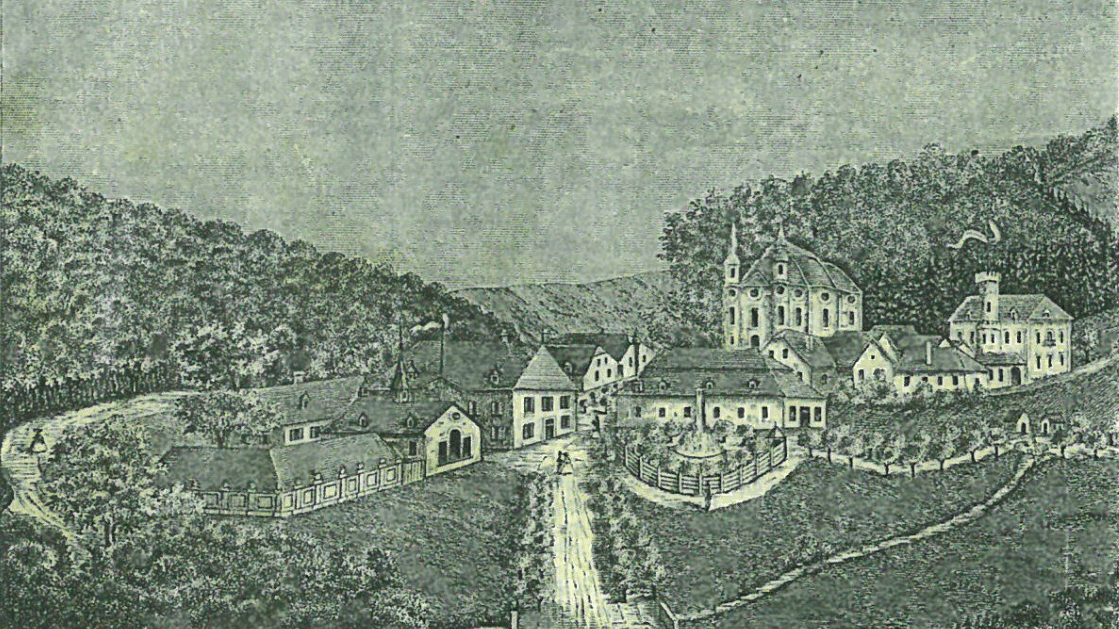
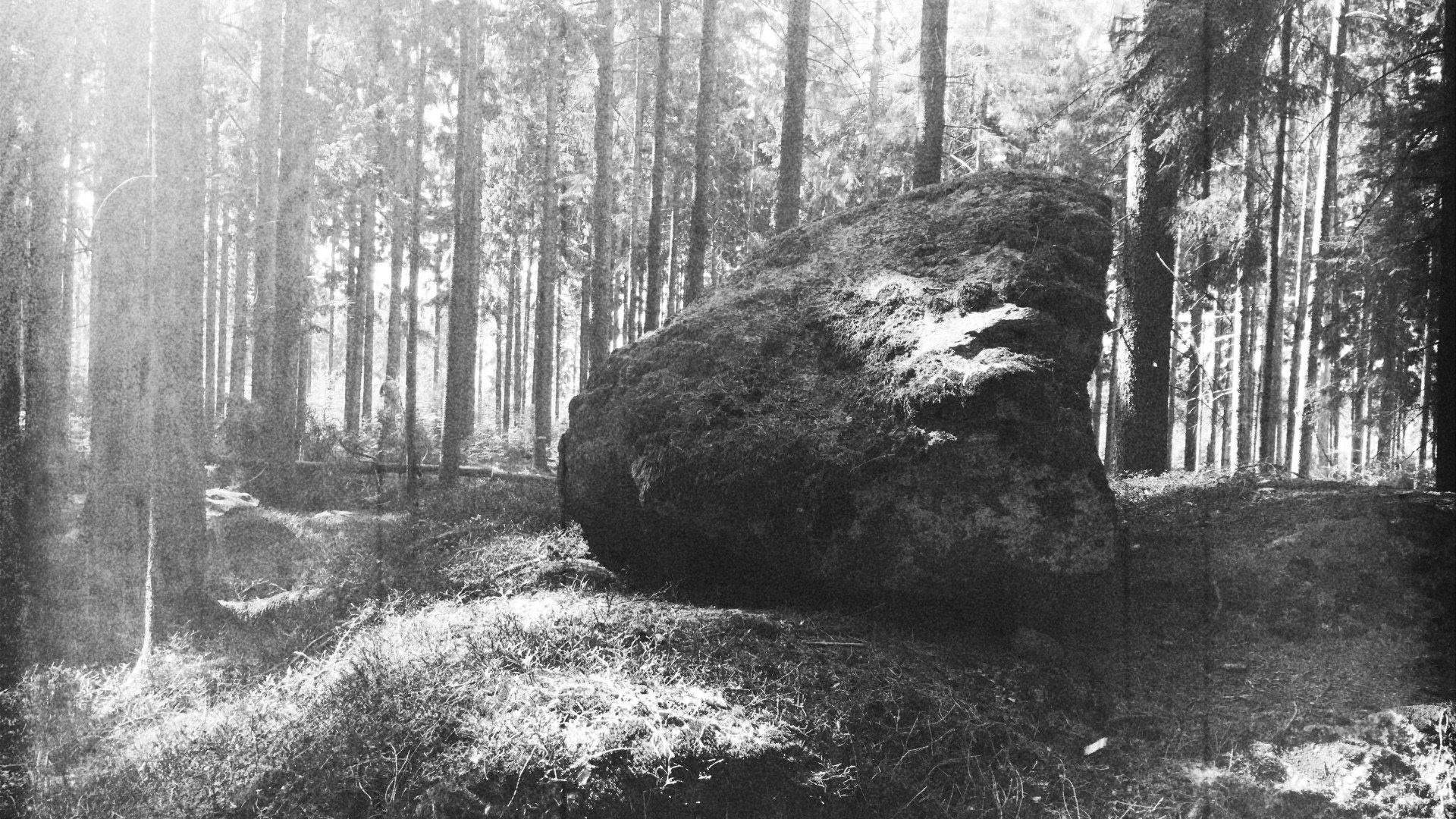
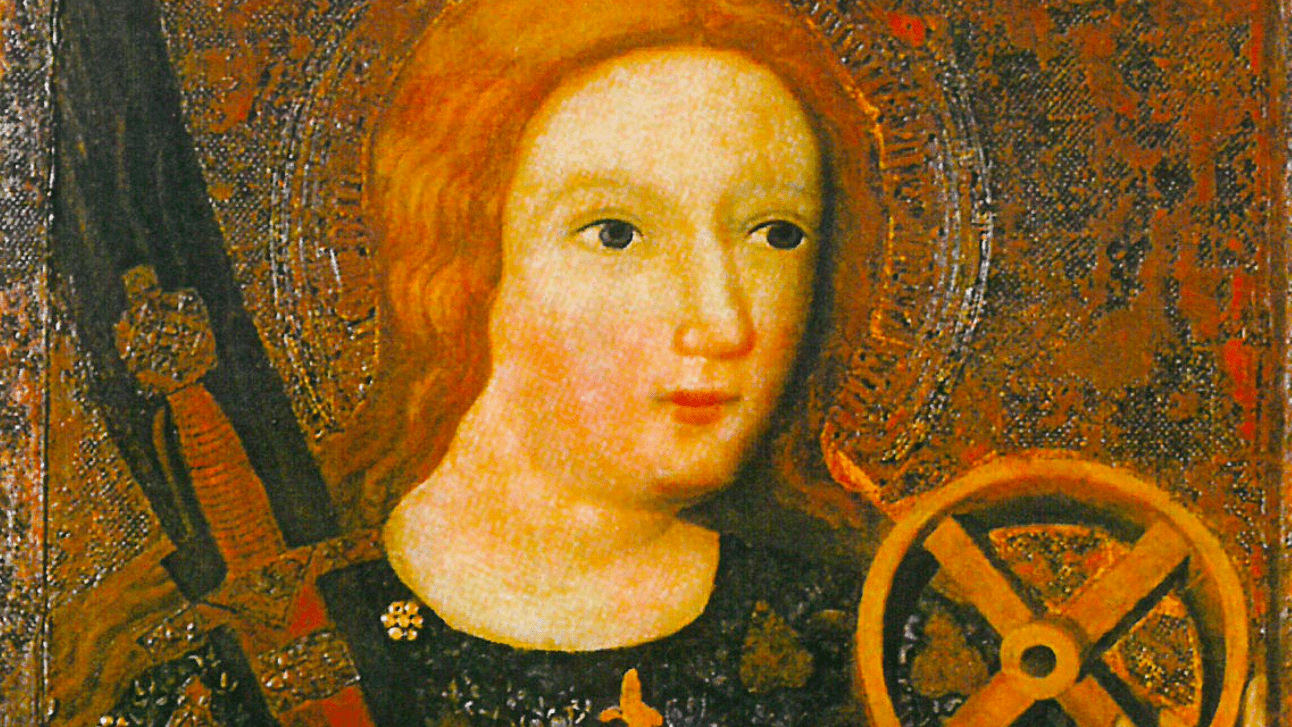
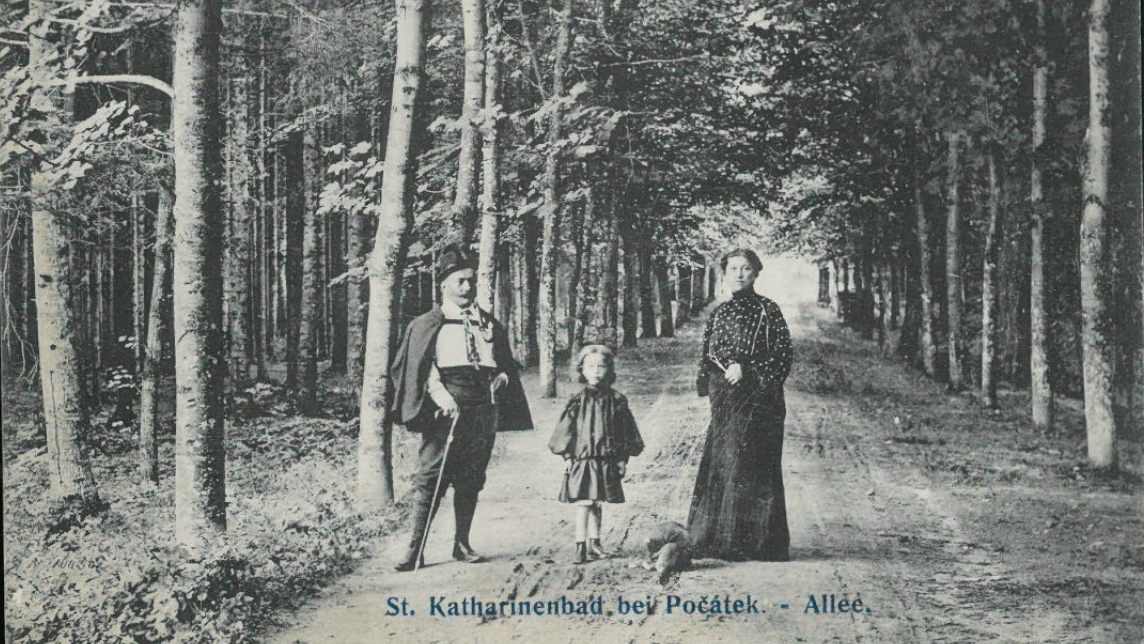
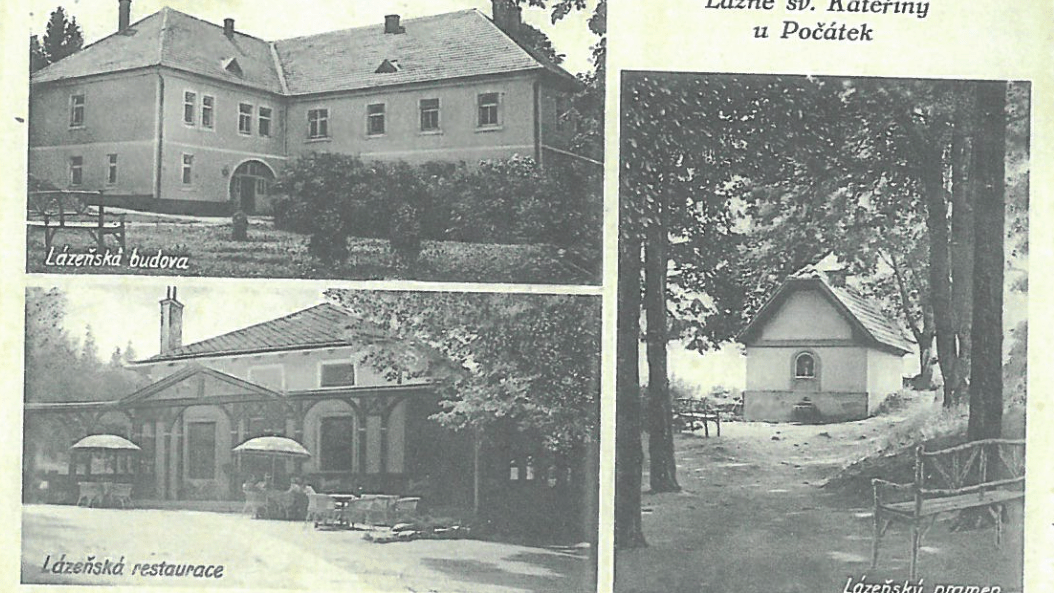
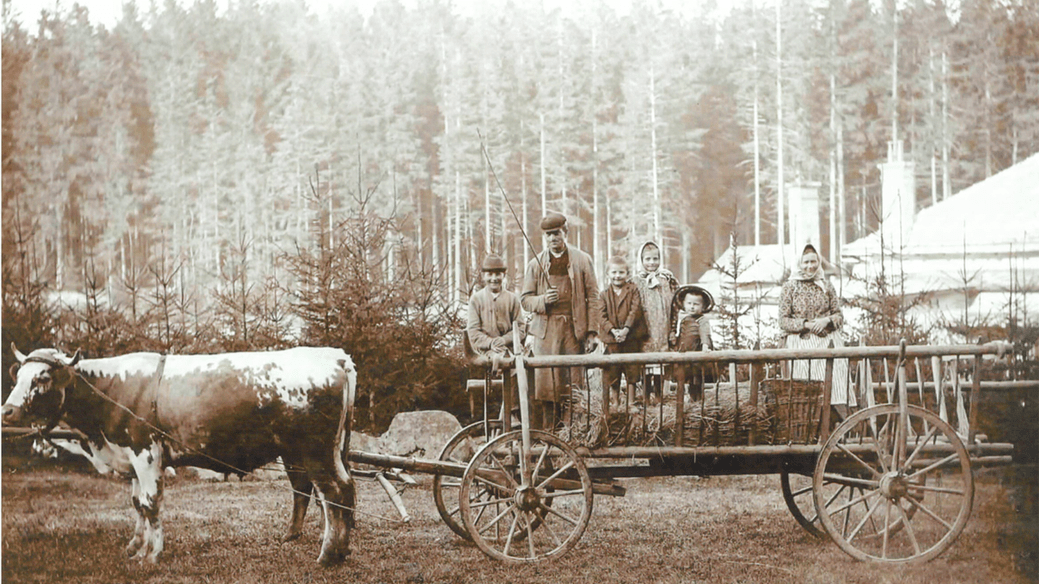
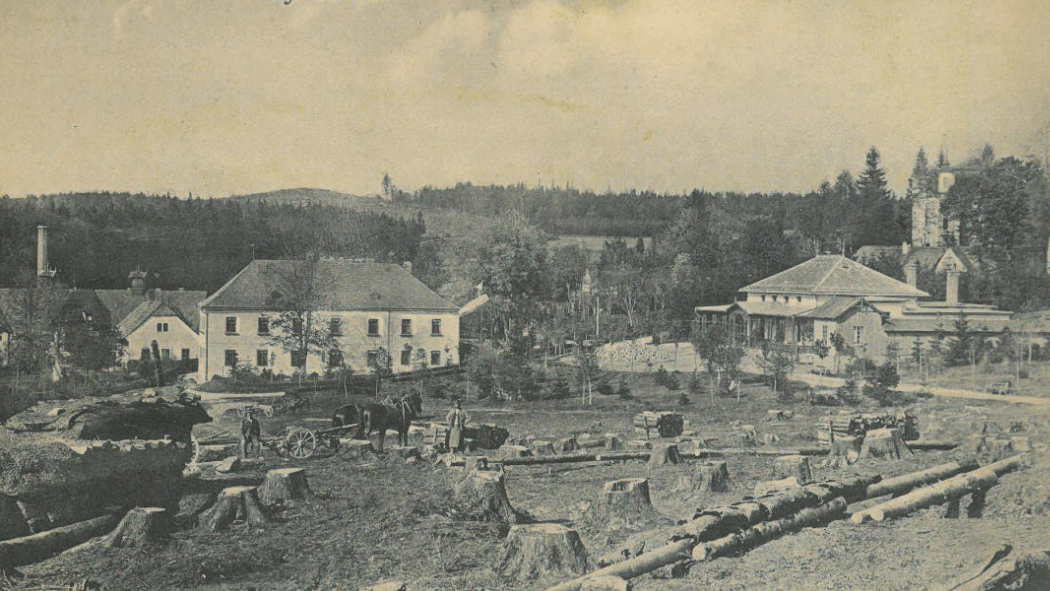
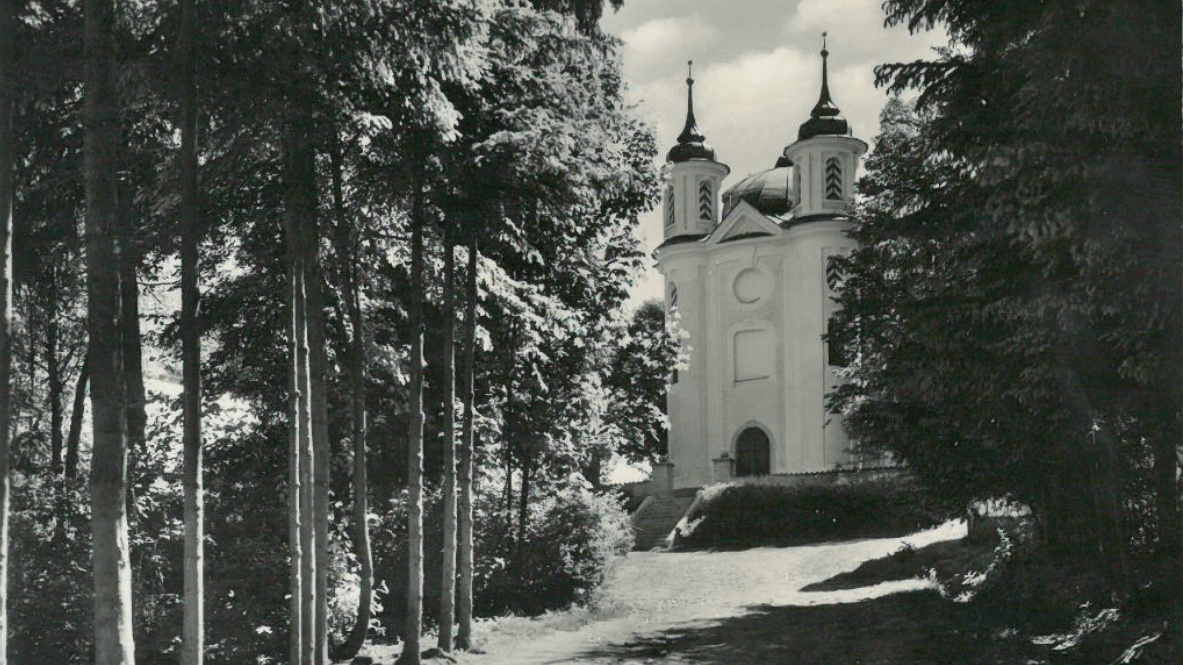
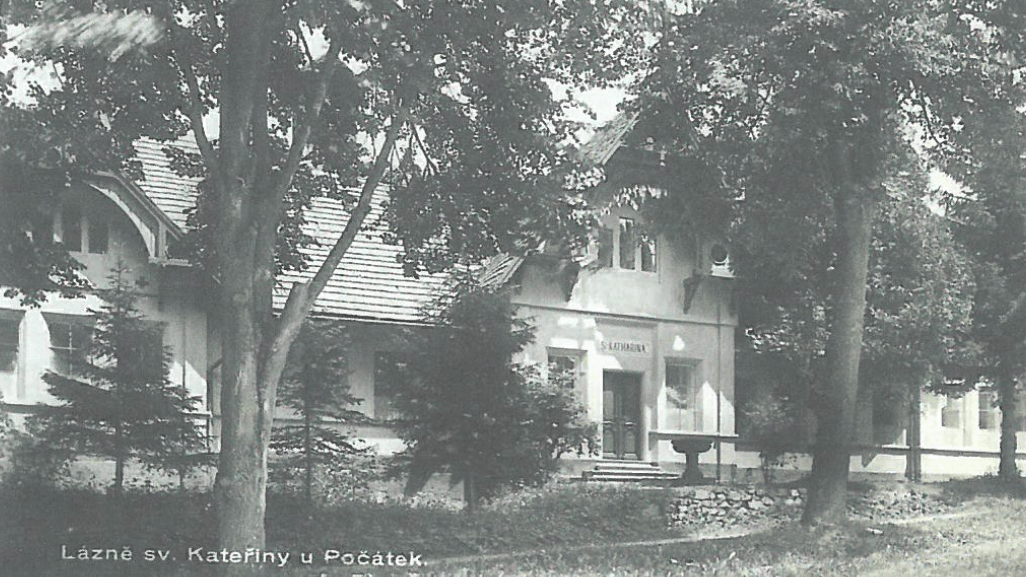
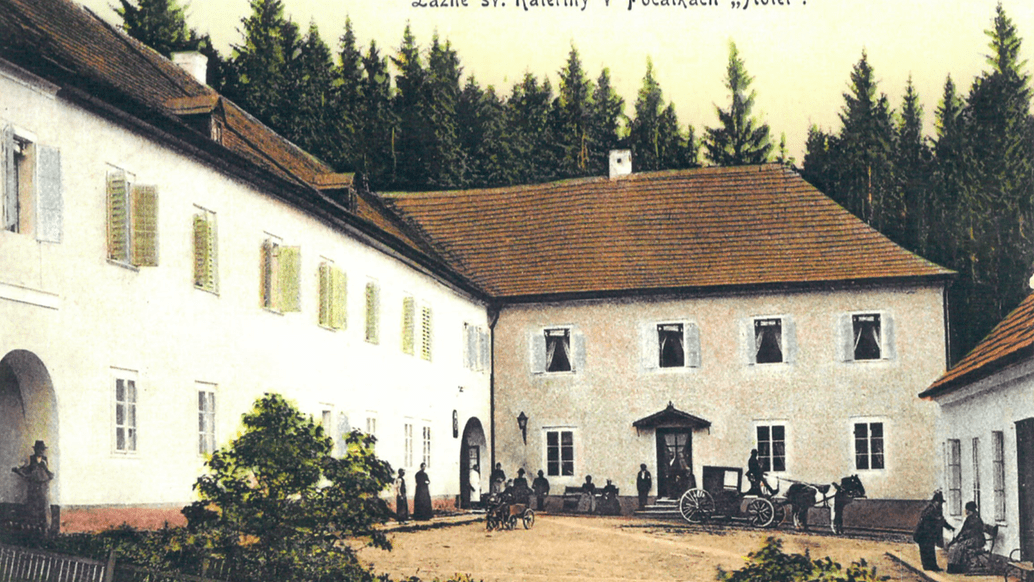
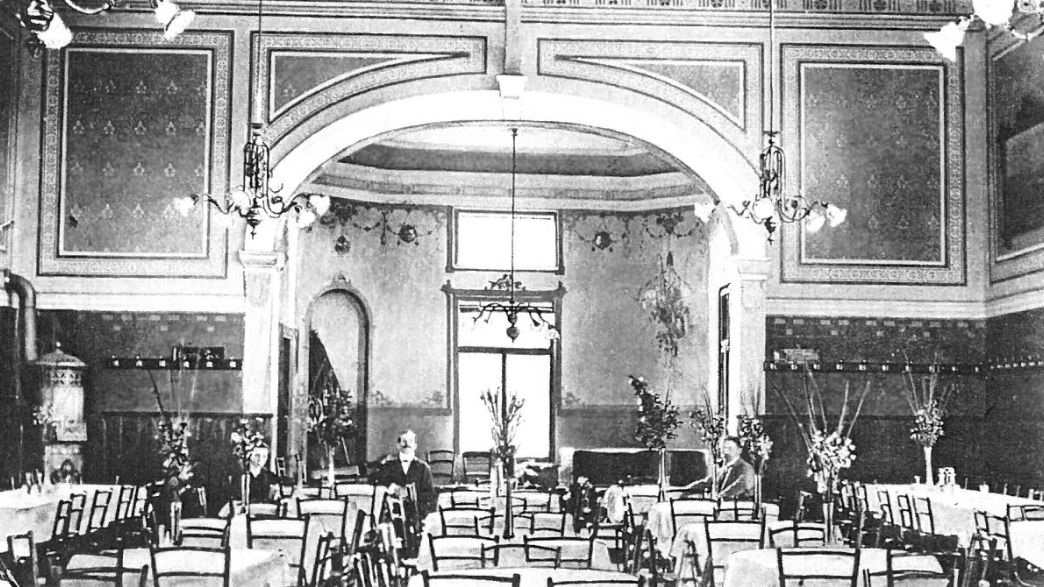
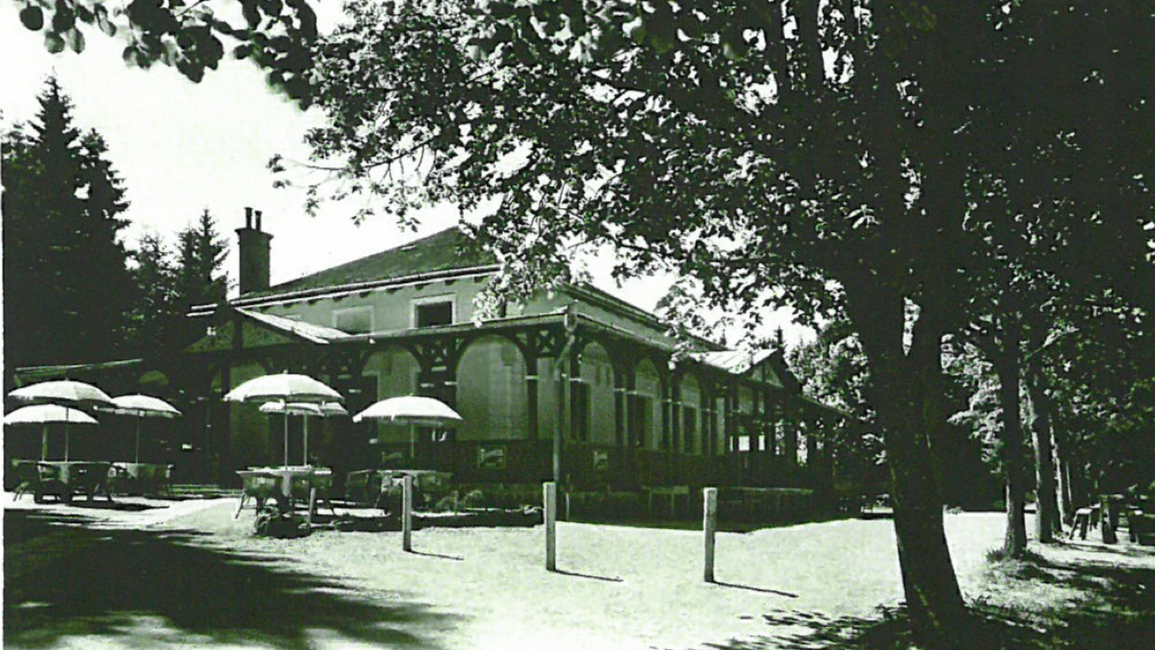
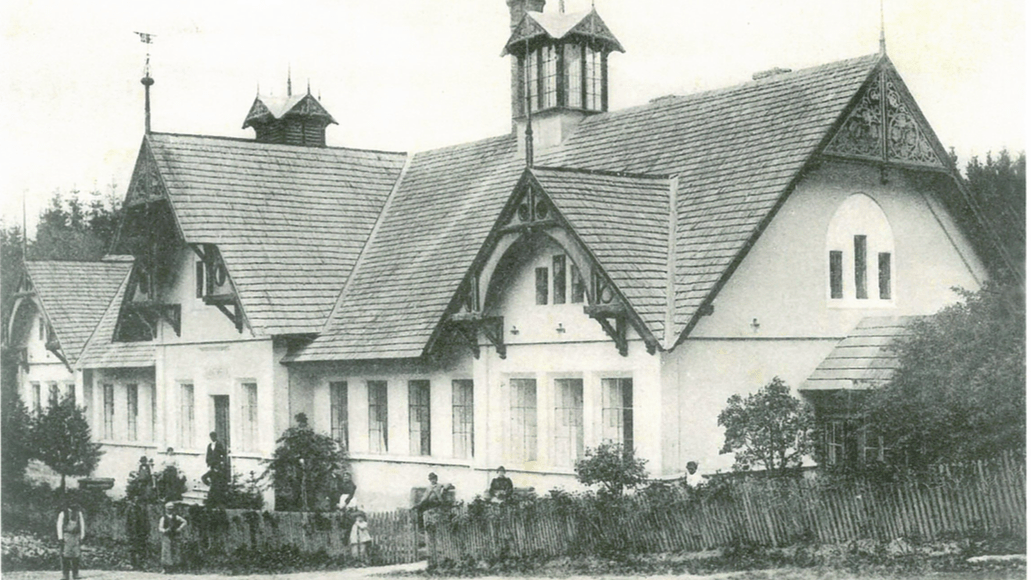
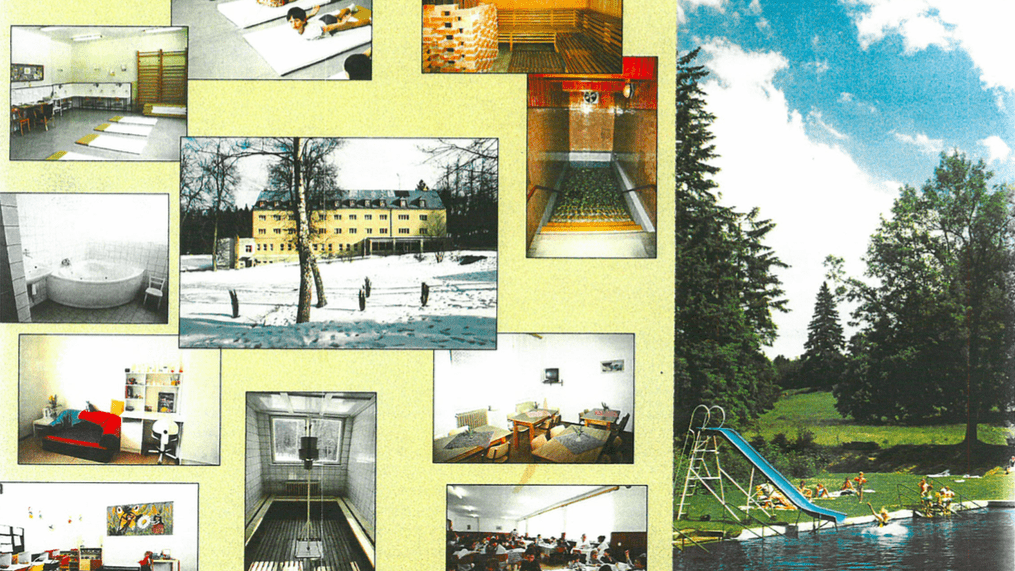
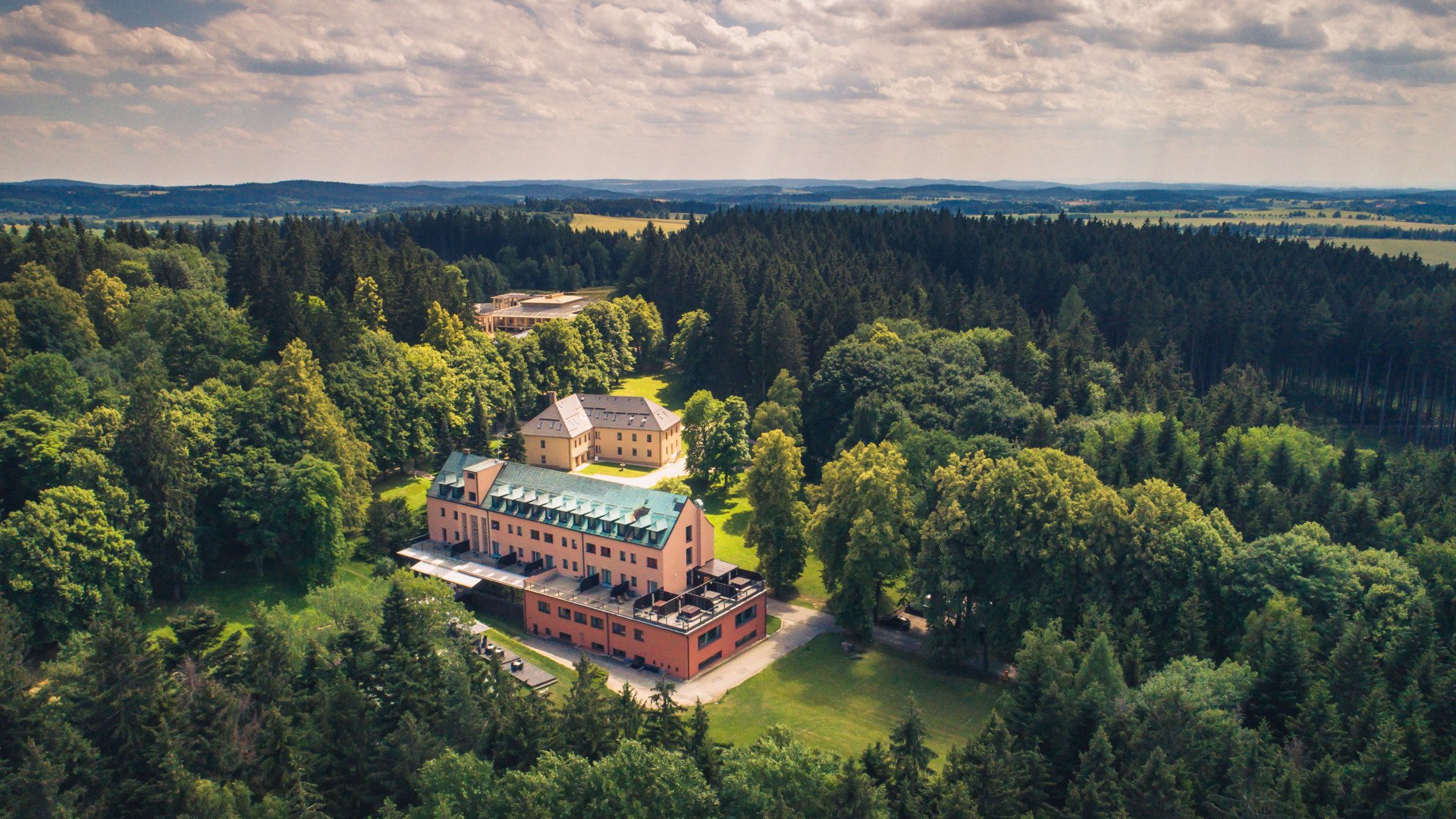
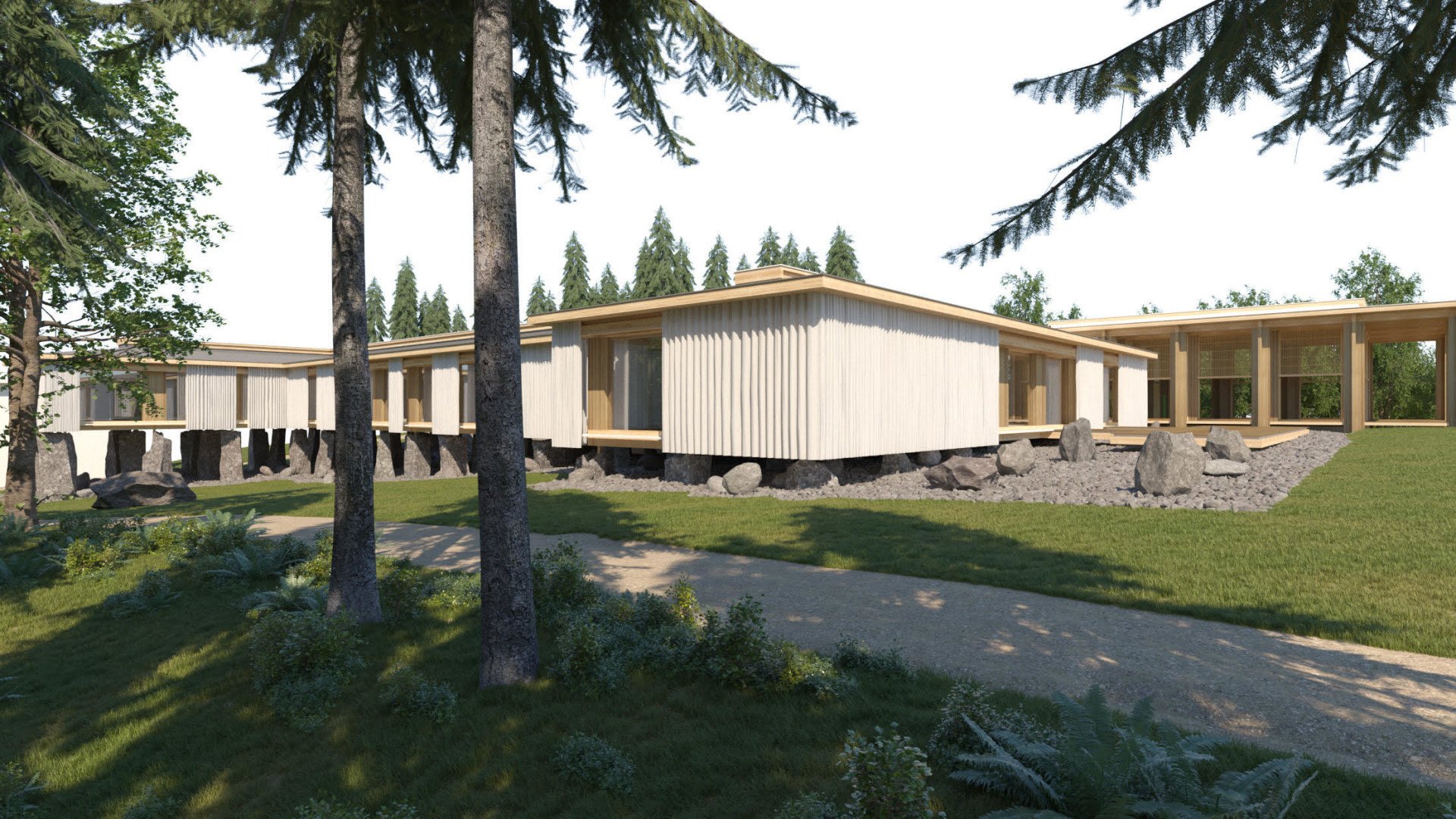
History
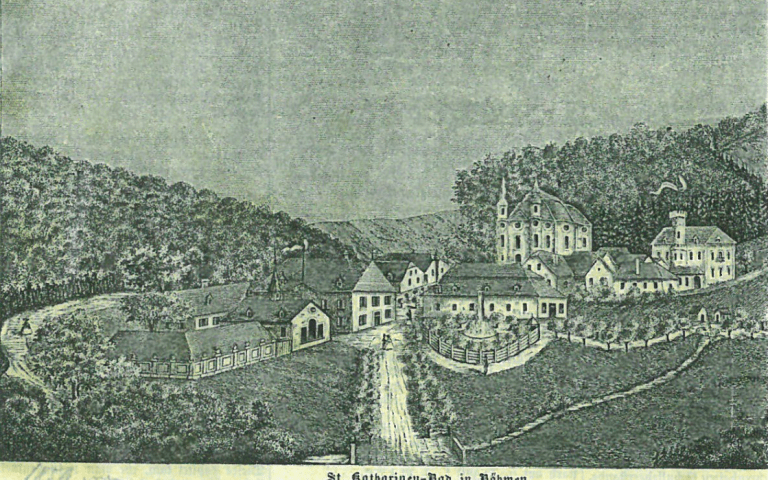
Svatá Kateřina
... Located on the border between Bohemia and Moravia with coniferous forests just 730 metres away, about half an hour walk from Počátky. It is one of the most beautiful and most cozy places of the Czech-Moravian Highlands.
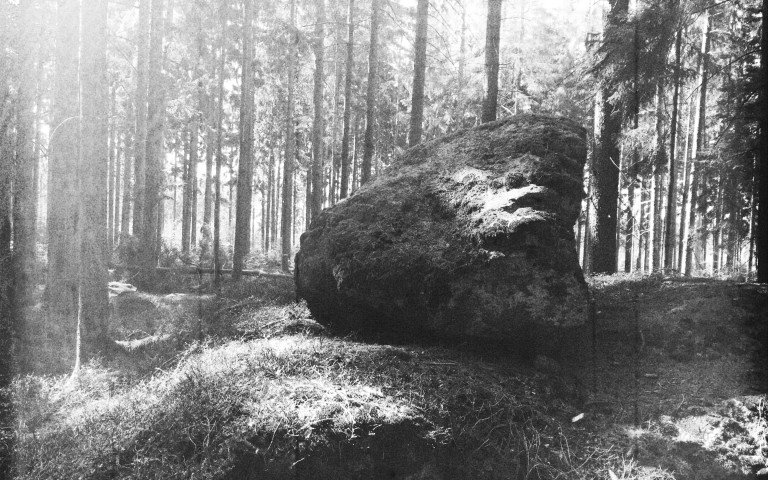
PAGAN TIMES
Nevertheless not many information on Svatá Kateřina is in existence to these days, the place is surrounded by numerous legends and mystery. The surrounding woods used to be one of the last Pagan´s sancturies. Till these days there is a place called “U obětních kamenů” (At sacrificial stones) in the woods at about 100 metres away from the highest point named Líska. These sacrificial stones, including a dolmen, represent a place where Pagan´s executed their sacrificial ceremonies.
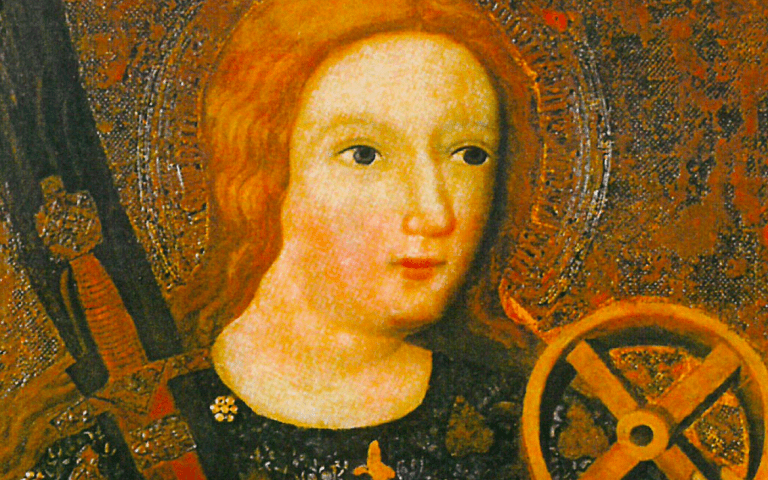
TREATMENT OF JAN ŽÍŽKA´s ARMY
The very first mention of St. Kateřina spa is unknown, because of no existing evidence. According to the legends, the spa have been visited since old days... According to Wenceslav Hajek Chronicle in 1423 Hussites treated their wounds with the holly water at the Battle of Bor near Horní Dubénky, to which is connected the folk name of Bor Lake: "Krvavec" (the Bloody Lake), named after the defeat of Jan Žižka's army. (The introduction to the Memorial book of St. Kateřina spa, 1852)
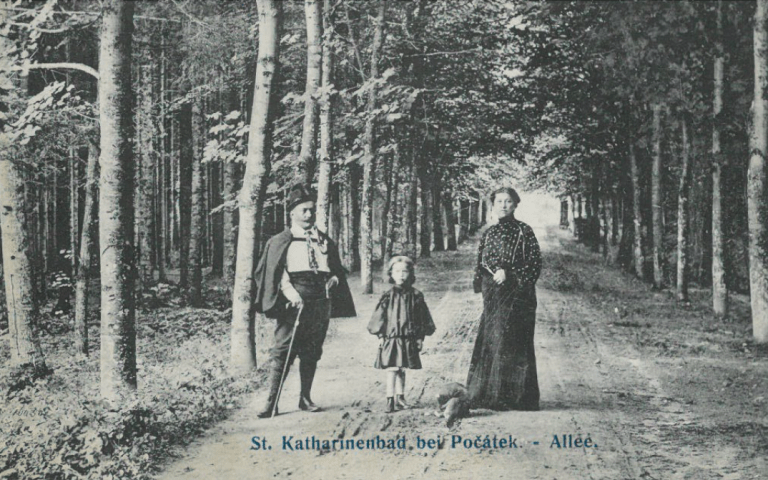
FOUNDING OF CHURCH BY ROSENBERGS
One of the great-noblemen of the Rosenbergs founded the church of St. Kateřina on the hillside of Liška as an expression of gratitude for his healing. Since then Rosenbergs used to visit the St. Kateřina spring to treat their ailments caused by their extravagant lifestyle.
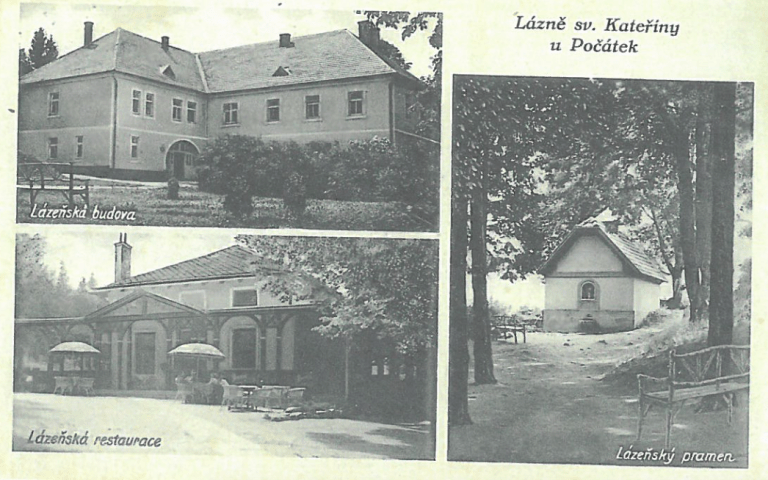
ST. KATEŘINA SPRING
The founding of the spa is said to owe its origin to Léskovec family, residing in the nearby fortress. Kryštof Léskovec (+ 1521) had three sons and two daughters - Kateřina and Markéta, who suddenly sickened. According to one of existing legends they sickened typhus and their father was seeking treatment vainly. The daughters recovered, when they started drinking water from the forest springs. From gratitude and, for the praise of God, the father built a chapel dedicated to St. Kateřina and the other spring 600 feets away from the chapel dedicated to St. Markéta.
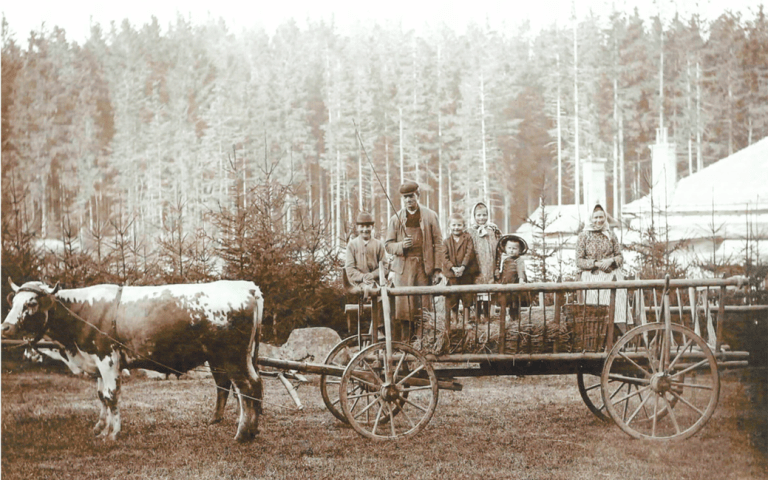
LORDS OF HRADEC
The springs were often visited by lords of Hradec. Between the years 1507 to 1531, Adam I. Hradec visited the castle of Žirovnice with his crew and used to make a stop at the nearby springs. He had a summer residence and spa called Dobrá voda built in here. The nobles used this place as a shelter during 1557 when the plague epidemic broke. In 1553, the spa and the church surroundings was inhabited by a herit named Hanzl. Paid by the lords of Hradec to take care of the the church of St. Kateřina, he is said to have a revelation.
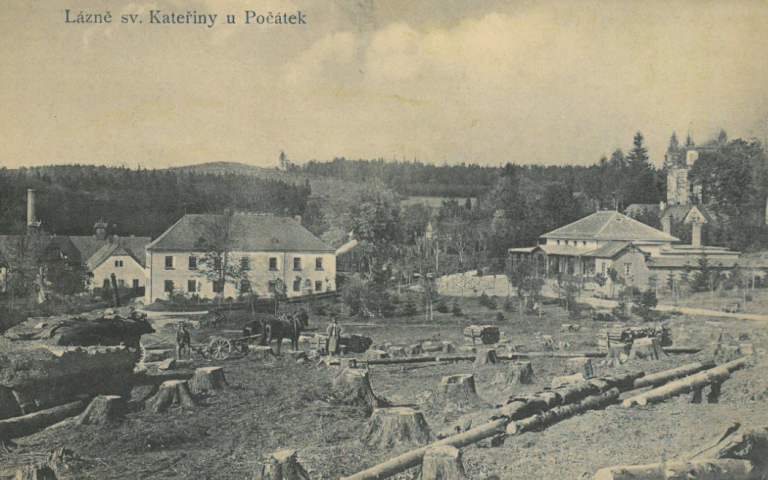
ANNA ROSENBERG PASTIME
Anna Rosenberg (+ 1580), widow of Jáchym of Hradec, who drowned in the Danube in 1565, liked to use the water from the St. Kateřina springs. While staying in Žirovnice, she came to St. Kateřina with her farm servants. For example, on 25th January 1572 she met here with her sister Eva, Countess Zlenská and in only one day she spent for breakfast and lunch 2 threescore and 4 and a half sous, 6 and a half denarius, which was equivalent to about 1000 CZK (in 1939).
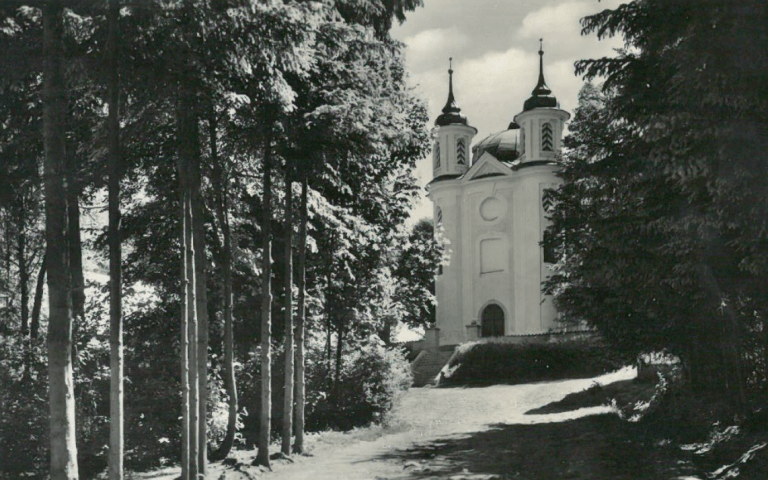
CHURCH REBUILDING
In 1594 Adam II. Hradec assigned rights to the church and the dominion to jesuits of Jindřichův Hradec. The jesuits administrated the filial church and surroundings baths till 1773. In 1730 the originally gothic church was rebuilt to its current Baroque style, attributed to the famous Dienzehofers.
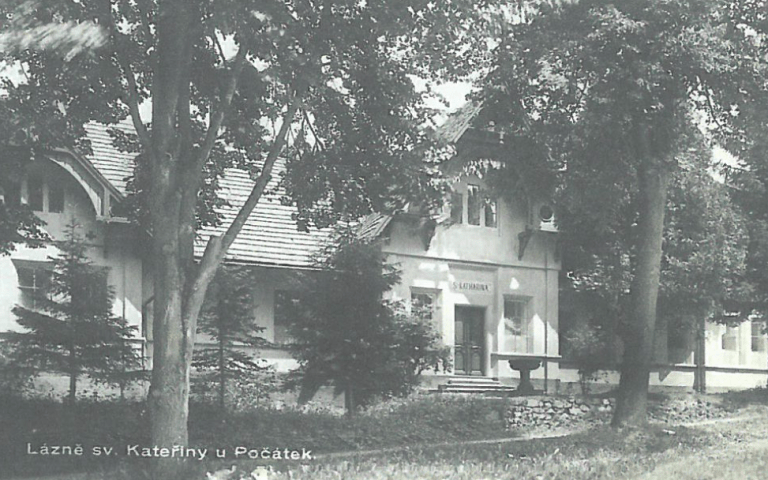
DARK AGES
There is not much evidence about this era perhaps due to the great fire of the town of Počátky on 27th May 1821, when a large archive was destroyed with all the rare documents and the registers. During the reign of Maria Theresia the healing springs were systematically explored, and according to the records also the spring of St. Kateřina was explored in 1763. The research led by Dr. Krassel, an explorer and a physicist of Bechyně region, considered the spring water as crystal clear, sparkling, taste-pleasant and odorless, with constant temperature of 6 ° C and some nitrate, sulfur and iron particles.
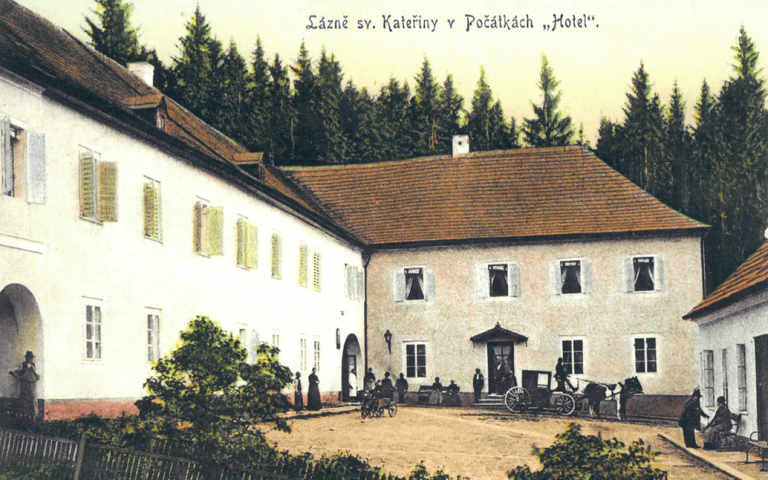
GOOD TIMES
In 1789, town of Počátky sold the land to František Krniak, who had the spa modernized. At that time the spa consisted of a wooden bathhouse with six lavatories and ten closets, pub with three rooms, kitchen, barn, chapel of St. Kateřina and the St. Kateřina spring. The number of visitors was growing, so in 1810 the new owner František Bukovský built a storey stone house with fifteen closets, dance hall and dining room. Another rebuilding was carried out by Matěj Joudl, a wealthy Viennese factory owner who extented the spa with a farmhouse and a field. In the seventies of the 19th century, up to three thousand baths were taken annually.
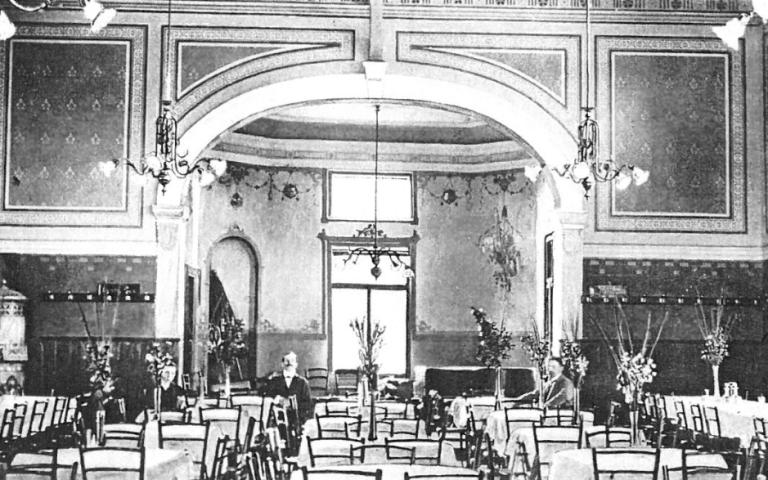
WATER RESEARCH BY PROFFESORS HUEPPE AND GINTL
In 1895, professors Hueppe and Gintl performed a chemical and bacteriological analysis of the St. Kateřina water source and called it "ideal water", which "is not only beneficial to the skin, but also the reflectoric nerve activity enhances performance of the heart, lungs, digestive organs and glands and acts on the whole nervous system and the transformation of substances. The spa was also promoted as a climatic spa. At a favorable altitude of 710 to 730 meters, in the middle of coniferous forests, patients feel the beneficial effect of this protected, dust-free and forest-surrounded area after a few weeks.
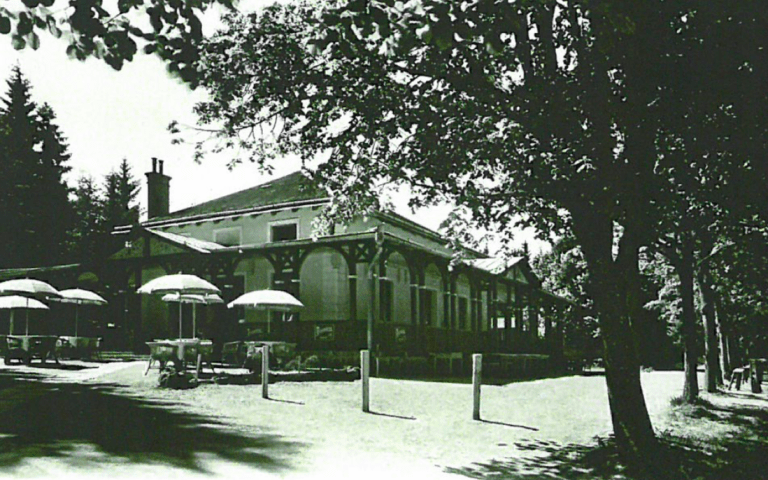
THE GREATEST PERIOD
At the turn of 19th and 20th centuries, the spa of St. Kateřina thrived. The restaurant and the ballroom attracted many visitors. During this time „the seasonal“ doctors visited the resort, including MUDr. Antonín Čapek, the father of Čapek brothers, with his family. In 1899, the spa was visited by famous Czech critique F. X. Šalda. In 1877, poet Julies Zeyer came to St. Kateřina to heal his nerves and write a novel Dobrodružství Madrány/ The Adventure of Madrána. At this time the St. Kateřina spaincluded also Russian spa and light and eletric spas, which other health resorts could hardly offer. The treatment consisted also physical work - patients were mowing meadows, drying and haying. They had to go for a walk, milk a cow or drink fresh milk every day.
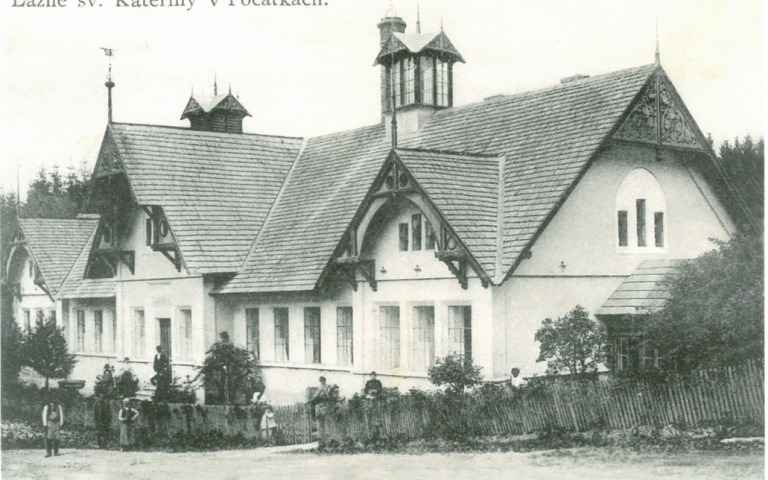
WORLD WARS AND TIME OF DECLINE
At the beginning of World War I the spa faced gradual decline. When the war refugees of Galicia were accommodated at the spa in 1917, the main building caught on fire and burnt. Efforts to restore the glory of the spa in the period between wars failed and the main building caught on fire for unknown reason and burnt once more in 1939. Jihočeské lázeňské podniky a.s. became the new owner in 1942 nevertheless the company made no efforts to get the spa into operation, therefore the City National Committee of the town of Počátky commited the spa under national administration.
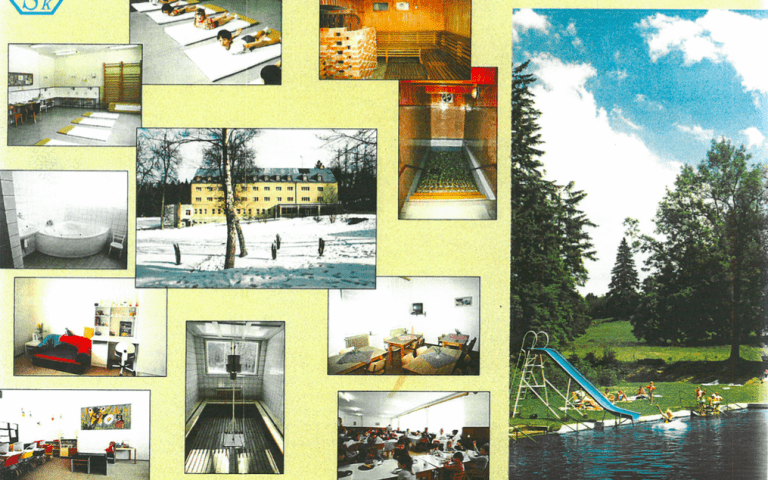
JULIUS FUČÍK CHILDREN'S SANATORIUM
After the temporary use as a training facility for tractor drivers between 1950 and 1951 the spa went into operation as children's sanatorium under the administration of the Ministry of Health in 1953. The clinic was used as a sanatorium for children with respiratory illnesses and characterized as a climatic health resort in the foothills, surrounded by a forest with no significant source of direct air pollution. The local climate is apparently harsher in comparison to the wider neighborhood and the snow covers the land much longer than elsewhere else. A part of the hospital was rebuilt as a new primary school. After the Velvet revolution the operation of the sanatorium was dwindling, and during the nineties of the twentieth century ceased the operation.
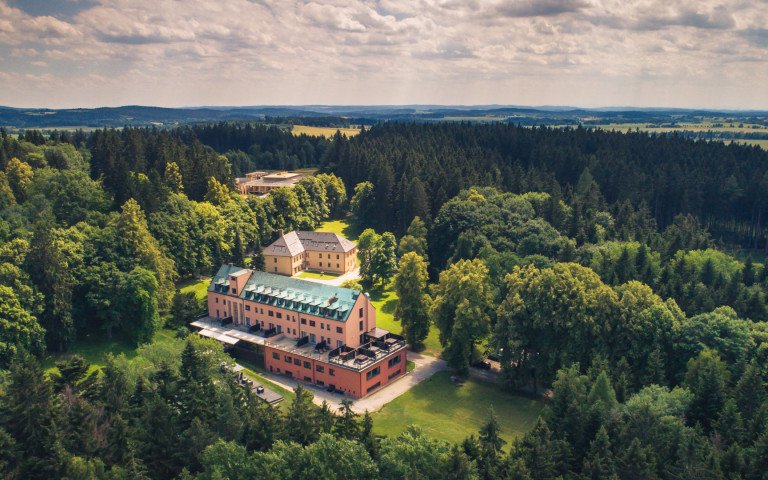
RESORT OPENING
In 2006, entrepreuner Petr Zempliner bought the spa from Vysočina Region. In two years, the building was rebuilt in its present form. Later Zempliner bought also farmhouse, meadows, fields and forests. Since 2008 this place, called the St. Kateřina Resort, has thrived again. Yoga classes, wellness stays, romantic visits of lovers or weight loss programs make the place alive. Since 2016 eleven Ayurvedic therapists, Ayurvedic chef and two Ayurvedic doctors came to St. Kateřina and brough here the ancient natural medicine from South India - Ayurveda, a „science of life."
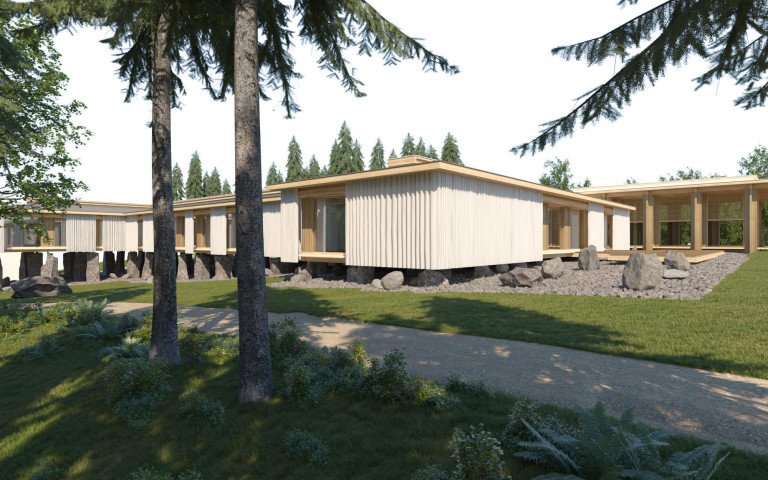
AYURVEDIC PAVILION OPENING
A new Pavilion will be opened in March 2019 to enrich the offer of the resort and provide genuine Ayurvedic experience. The wooden structure of the building floats on hundreds of huge granite pillars etracted from a nearby quarry. The glass casing the pavilion strengthens the feeling of constant contact with the surrounding nature. A meditation garden with a waterfall, roaring stream and statues of Hindu Gods will take us nine thousand kilometers east and five thousand years in the past, to the cradle of Ayurveda in Kerala, India.